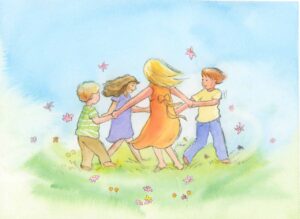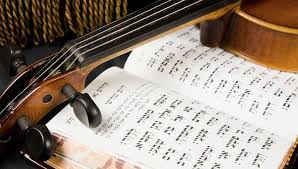We have all heard about “helicopter parenting” (and from time to time may be guilty of it ourselves), where a parent injects themselves into the activity, experiences, or problems of a child, particularly in educational institutions. While this kind of involvement in a child’s education is considered detrimental to their long term well-being, parental involvement and participation in the early childhood music studio is highly encouraged. The following synopsis is based on a series of podcasts from Musikgarten that delves into the parental role in an early childhood music and movement classroom.
Parental Roles in Early Childhood Music Education
When exploring the role of the parent in the physical and psychological well-being of children in the classroom, one of the most important benefits of parental involvement is that the caregiver can immerse themselves into the experience and become an active part of the learning process. Through modeling and participating, not only does the parent get the enjoyment of making music with their child, but also benefit from the bonding that happens during the process. In the earliest stages of childhood, children have been mimicking their parents for some time, so having them alongside in the music classroom seems natural. Today’s caregivers are bombarded with optional activities for their children, but most do not ask for full participation other than to perhaps register, transport, and provide snacks. It can be daunting for parents to adjust to this role in a classroom setting, especially when surrounded by other parents. So, there is also modeling going on between the teacher and the caregivers, as well as between parents. And because the teacher is leading the activities in the classroom, the parent’s main role is to simply be present and have fun with their child.
The Role of Early Childhood Music Teachers in Making Parents Feel Comfortable
Just as a child may feel apprehensive and nervous about a new classroom setting, teachers should keep in mind that parents and caregivers may also be feeling self-conscious about participation. While they may regularly participate in instructed group activities such as yoga or church groups, being asked to sing and “act silly” in front of others can be intimidating. Physical or psychological limitations may also make the caregiver hesitate to participate in activities, such as confidence in singing or getting up and down on the floor.
Just as with the child, the teacher’s role is to be aware of reluctance in the parent as well and provide a comfortable atmosphere in which to participate. In addition, it’s important to remind caregivers that their child craves their participation, whether its singing or movement. The child does not care how well the parent sings, but loves to hear their voice because of the comfort it provides and a sense of safety since birth. Teachers should continue to encourage the parents to participate and find the level of comfort that will prompt participation.
One interesting result of good parent participation is as a child eventually finds their voice, they may actually ask parents to participate less by putting their hand over their mouth or even asking them to leave. While it is important to encourage the child to find their own voice, it’s also the teacher’s role to tell both that the class is a family class and should be shared together. As the child grows older, they will not only find their voice, but also be able to share that voice with others in a musical setting.
Parent and caregiver participation in the early childhood music classroom setting is important in the healthy development for a child’s love and understanding of music. The comfort and modeling it provides is invaluable to developing an affinity in learning and creating music. In addition to music curriculum, the teachers role is to encourage both parent and child to participate while simply having fun.








